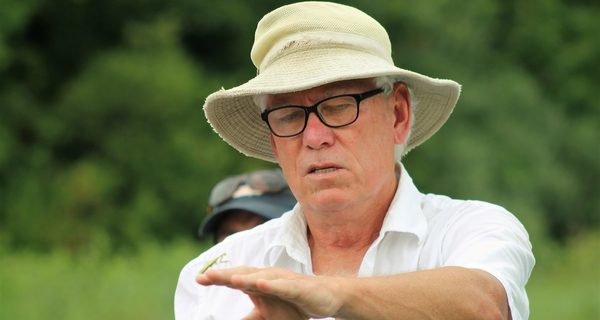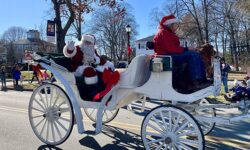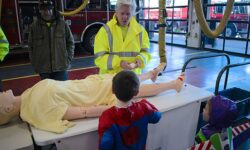Although the walk focused on flowers, Cassie couldn’t help but point out a few animals and insects, like this Chinese mantis.
By James Kinneen
Hometown Weekly Reporter
On Saturday afternoon at Adams Farm, the crowd of people on the wildflower walk had already learned that bumblebees are, but honeybees are not, indigenous to North America and were brought by Europeans; that goldenrod doesn't actually cause allergies, despite its reputation; about burdock’s connection to the creation of Velcro; and that Native Americans called some plants brought from England “white man’s footprint,” because wherever they sprung up, it meant colonists had been. Now, the assembled were also in the process of watching a monarch butterfly lay an egg on a milkweed leaf.
It had been about five minutes, and we had barely walked ten yards.
That’s just how interesting and informative Brian Cassie’s guided walk around the Adams Farm trail was.
Hailing from Foxboro, where he has advocated to save certain butterfly habitats from being cleared and paved, Cassie was a science teacher in Brookline who won Norfolk County Science Educator of the Year in 2011. He has also written fifteen books on nature and butterflies, including many National Audubon field guides about things like shells and trees, served as principal coordinator of the Massachusetts Butterfly Atlas Project and founded the Massachusetts Audubon Society’s Butterfly Club.

So, while this was one of six free, guided walks at Adams Farm - each having its own specific theme and with one more installation on insects scheduled to take place in September - Cassie was more than happy to point out any interesting critters we came across on the brief walk, while still focusing on the wildflowers themselves.
After first meeting at the picnic tables and discussing book-in-hand field guides versus the new plant recognizing apps that have been developed, Cassie joked that since he wrote half of “The Audobon Society Field Guide of New England”, he “recommends you buy a few of those for yourself and some for Christmas presents.”
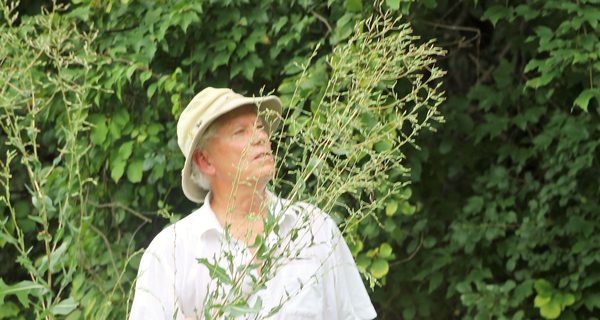
Immediately heading out past the fence, Cassie pointed out a poisonous nightshade and explained that since it looks so much like tomatoes, people were once convinced tomatoes were also toxic. Then he found some smartweed and explained that there’s a theory that people say “that smarts" to mean “that stings,” because that plant will sting you if you try to chew on it.

Adorned in Wellies to deal with tearthumb (which he joked should be called “tear leg” for what it does to anyone wearing shorts who comes in contact with it) Cassie found a milkweed plant with monarch butterfly eggs on it, picked it, and gave it to a young child to take home and care for the eventual caterpillars and butterflies. Then, he found some Sassafras and invited the group to pass it around and smell it. Cassie also grabbed some poison ivy with his bare hand, which drew some "oohs" and "aahs" from the group, but had no takers when it came to passing those leaves around. He said he comes in contact with poison ivy all the time, but as long as you use rubbing alcohol it won’t affect you.
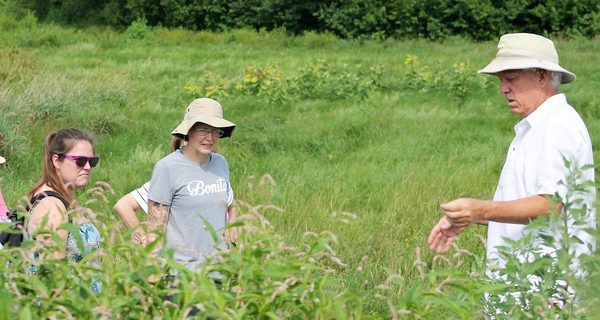
After finding a Chinese mantis, Cassie (who had joked earler about not dealing with the Latin names) ran into some bedstraw which he explained "you could guess why it got that name” before stopping and letting everyone pick some blackberries to eat. He also pointed out some St. John’s wort, a lettuce plant that had grown out of control, a wild cherry tree, wild grapes, and some Queen Anne’s Lace, which is actually a wild carrot.
While the walk focused on wildflowers, on Saturday morning, Brian Cassie planted the seeds of knowledge in a group of people who learned not just about wildflowers and their history, but about the surprising biodiversity just steps away at Adams Farm.



